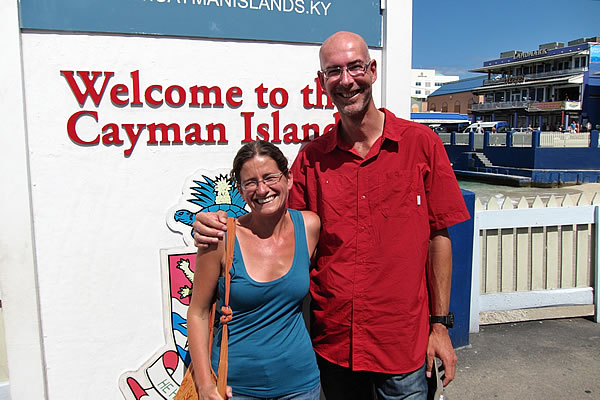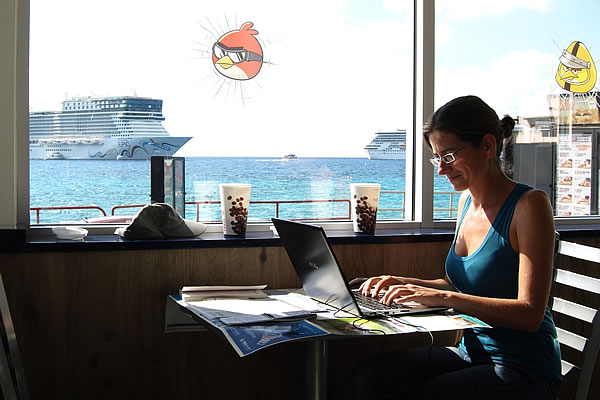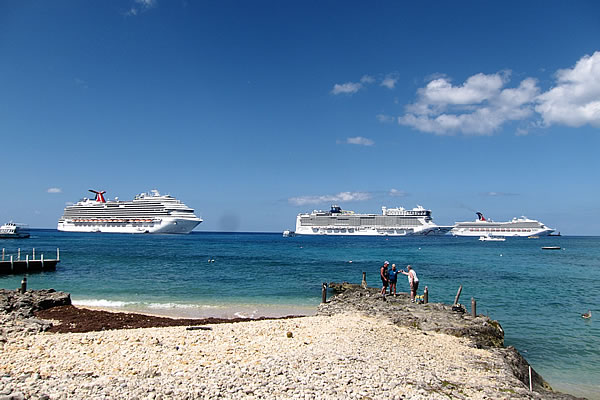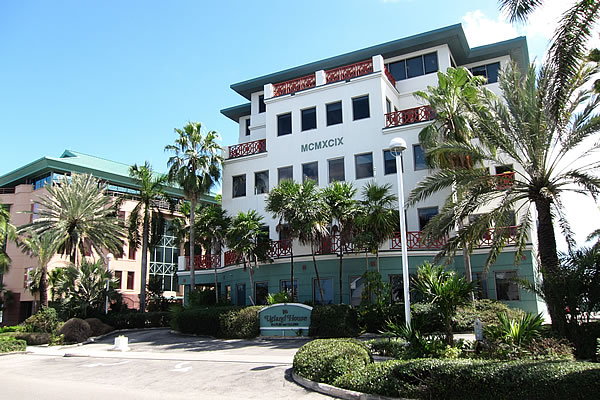English | Dutch |
|
| The fats, almost dead, and newlyweds | |
Montego Bay (Jamaica), February 12th 2015
|
|
| |
|
What brought you to the Cayman Islands many will probably ask? The answer is quite simple. We wanted to fly from Cuba to Jamaica, and the airline of the Cayman Islands (Cayman Airways) proved to be the cheapest and most reliable option. Result was that we had to make a stopover on Grand Cayman, the largest island of the Caribbean island group, which is especially famous, or should we say infamous, as a tax haven. And now we had to make the stopover, we decided to stay a little bit longer. A good reason to experience the island in a little bit more detail. The history of the islands is not very complex. When Columbus discovered the islands by accident in 1503, when he was on the way from Panama to Hispaniola, there were no people living on Cayman. The islands were used in subsequent decades by the Spanish, British and Dutch as a stopover for their discovery travels in the Americas. In the second half of the 17th century, the Cayman Islands became part of the British Empire and a few Brits, who already lived in Jamaica, decided to make the step to the newest addition of the British Empire. A number of them also took their slaves. Only after the Second World War, the development of the Cayman Islands gained momentum. Offshore finance (read: tax haven and money laundering paradise) and tourism are the two major forms of business on the islands today. |
|
 |
|
Who had thought that we would ever bring a visit to the Cayman Islands |
|
The Cayman Islands are expensive; extremely expensive. Before we decided to make a stopover for a few days, we did some research on the internet to see if we could stay there for a reasonable amount of money. Luckily we found a guesthouse for backpackers, where we paid US$ 60 (53 Euro) per night for a simple room with shared facilities. We got an email from the guesthouse, a couple of days before we arrived, to warn us that we should not tell the immigration officers at the airport that we were staying in the guest house. The government of the Cayman Islands does not like backpackers, and prefers to see Americans and Europeans with a well-filled wallet who stay in four or five star resorts. For that reason they try to avoid travellers staying at the cheaper places on the island. So if you mention that you stay in one of the few cheap guesthouses, the immigration officials will probably force you to make an on the spot booking for an expensive place. And for that reason we mentioned on the immigration card that we planned to stay in the expensive Marriott Cayman Hotel. The Cayman Islands also have a number of beautiful and well-stocked supermarkets. Because everything has to be imported, these supermarkets are also expensive, but still much cheaper than the restaurants on the island. The beautiful supermarket named 'Kirk' (in George Town) even has a hot and cold buffet, where you can choose from different delicious dishes. You can fill your Styrofoam box as much as you want because you pay by weight at the cashier (about 7 Euro per 500 grams). All dishes are equally priced, so you can fill your box with the dishes you want. And for travellers who prefer a fast food meal, there are several Burger King Restaurants on the island. It is thus possible to keep the costs reasonable under control on the islands. | |
 |
|
Working on our website at the Burger King, with some cruise ships in the background |
|
The demographics of the residents on the island is approximately 50-50; so 50% white people and 50% black people. White people are often wealthy retirees from the West who live here much of the year, and people who work in the banking/consulting industry. The black population is mainly engaged in low-skilled occupations. Think of staff for hotels, restaurants, supermarkets, transport and construction. The people of the Cayman Islands aren’t very friendly is what we experienced. Georgetown is the capital city of the islands. In fact you could call it better capital village, because it doesn’t really has real urban features. Georgetown is certainly not very beautiful or atmospheric. It resembles a small American town whose population is accustomed to do everything by car. Sights are not there, or it must be the Ugland House. This is the building once mentioned by US President Barack Obama when he talked about tax evasion: "this is or the largest building in the world, or the biggest tax scam." On the address of this small, ugly and somewhat dated office building in Georgetown are no less than 18,000 companies registered. Almost all these companies are present in Cayman for tax reasons. Few of them have actual operations presence on the islands. The beauty of the Cayman Islands is really all about the beach and the sea. The nearly 10-kilometer-long sandy beach on the west coast is considered one of the finest in the Caribbean, and also underwater, this island seems to be a paradise. However, most visitors to the island, come as a cruise tourist. On average, between four and six cruise ships visit the Cayman Islands daily. Thousands of passengers, mostly Americans, are shuttled by small boats to the shore, because the port of Georgetown is not deep enough to allow the ships to reach the shore. It is a spectacle to see how every morning the ships arrive, disembarked thousands of people for a few hours, then loading them again, before they sail out again around sunset and disappear on the horizon, on the way to the next destination. And while we were watching the whole process on an afternoon from the small harbour of George Town, a young local woman said to us: "Cruising is not something for me. It's something for the fats, nearly deads, and newlyweds", pointing out to the often very fat and old American tourist on their way to the shuttle boat to bring them back to the ship. |
|
 |
|
The plane of Cayman Airways that brought us from Havana to Cayman |
|
 |
|
Some of the cruise ships in the harbour of George Town |
|
 |
|
The Mastic Trail, a last piece of wilderness on Grand Cayman |
|
 |
|
The Ugland building: massive tax evasion? |
|
 |
|
A buffet meal from the Kirk supermarket |
|